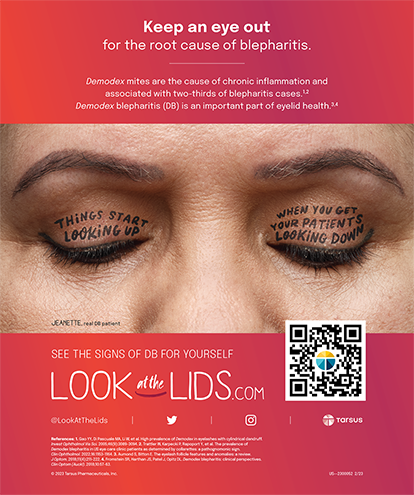This installment of “Inside Eyetube.net” highlights videos dedicated to complicated cataract cases and the IOL's implantation. Preserving the ocular anatomy, avoiding harm, and solving the individual refractive problems of each patient require careful preoperative examinations and customized surgical procedures. Every day cataract surgeons face patients' rising expectations of excellent visual recovery, even in cases with complex scenarios. The latest technologies and IOL designs allow safe IOL implantation with minimal damage to ocular tissues.
TRANSPLANTING A DONOR CAPSULAR BAG
Andrey Yakimov, MD, and Yurly Kondratenko, MD, demonstrate their surgical technique for effectively and safely transplanting a donor capsular bag along with an AcrySof IQ IOL (Alcon Laboratories, Inc., Fort Worth, TX). Their approach is geared toward patients who lost their capsular bag prior to or during cataract surgery. They aim to reduce macular edema and retinal detachment risk formation. To fixate the capsular bag properly, the surgeons use iris retractors, which offer excellent support, even in cases of subluxated lenses (Figure 1).
DUAL IOL EXCHANGE
Stephen Tate, MD, performs a double IOL exchange in a case of iris capture with pupillary block involving a 53-year-old patient who had a previous piggyback IOL and recurrent episodes of iritis. Dr. Tate's gentle viscomanipulation of the IOLs facilitates their exchange. He protects the capsule by disassembling the previous IOL over a posterior chamber IOL (Figure 2).
LENS COLOBOMA
To correct a lens coloboma, Amar Agarwal, MS, FRCS, FRCOphth, implements a vertical glued-IOL technique and makes partial-thickness scleral flaps at the 12- and 6-o'clock positions. He performs a lensectomy and vitrectomy with an automated vitrector. As Dr. Agarwal injects a three-piece foldable IOL, he uses a microforceps to grasp and externalize the leading haptic through the sclerotomy. After using the handshake technique to externalize the trailing haptic, he tucks the haptics into the previously made scleral tunnels. Finally, he seals the scleral flaps and conjunctiva with fibrin glue (Figure 3).
IMPLANTATION OF AN ACRYLIC IOL
Alcon Laboratories, Inc., presents four videos demonstrating various techniques for implanting the AcrySof IOL. The series includes instructional videos on loading the IOL into the company's Monarch cartridge with standard forceps and the three-step process for preparing Alcon's AcrySert C Delivery System. It also includes videos on the inspection of the AcrySof IQ IOL's haptics and the placement of an AcrySof single-piece IOL, with directions on how to load it into the Monarch cartridge using Alcon's Grieshaber IOL Loading Forceps (Figure 4).
CONCLUSION
Cataract surgery still remains one of the most challenging surgical procedures. Watch these videos to learn smart solutions to common problems.
Section Editor Elena Albé, MD, is a consultant in the Department of Ophthalmology, Cornea Service, Istituto Clinico Humanitas Ophthalmology Clinic, Milan, Italy. She acknowledged no financial interest in the products or companies mentioned herein. Dr. Albé may be reached at +39 0331 441721; elena.albe@gmail.com.
Section Editor Richard M. Awdeh, MD, is the director of technology transfer and innovation and an assistant professor of ophthalmology at the Bascom Palmer Eye Institute in Miami. He acknowledged no financial interest in the products or companies mentioned herein. Dr. Awdeh may be reached at (305) 326-6000; rawdeh@med.miami.edu.
Section Editor William B. Trattler, MD, is the director of cornea at the Center for Excellence in Eye Care in Miami and the chief medical editor of Eyetube.net. He acknowledged no financial interest in the products or companies mentioned herein. Dr. Trattler may be reached at (305) 598-2020; wtrattler@earthlink.net.


